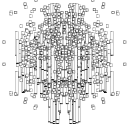-
-
 solipp
posted in news • read more
solipp
posted in news • read more@jyg said:
Did you re-upload the latest audiolab 0.71.1 ?
yes, i re-uploaded, thanks to this comment from IOhannes in the list:
what i can say is, that the "audiolab" package includes both a "LICENSE"
file and a "License/" directory.
this is not a problem on case-sensitive filesystems (like ext2/3/4 on
linux), but it cannot work on case-insensitive filesystems (like FAT32,
NTFS or HFS+).I was not aware of this and it was on my end to fix it, so thank you for bringing it up in the list!
Edit: the version number is the same, 0.71.1 because nothing has changed in the files except that LICENCE is now called LICENSE.txt.
If anyone else had issues with the install from deken, please try again.Thanks again for helping to clear this up!
-
 solipp
posted in news • read more
solipp
posted in news • read more@jyg hm so i just checked if i missed something and if it is actually common practice to share files on deken with group and global write permissions. But that doesn't seem to be the case, here is a part of
zipinfooutput of else-v1.0-0_rc14 for example:

Is installing else causing trouble for you?
Could it be that you are having this problems because you are logged in as admin, not as user or you are trying to unpack these files to a protected folder or something like this?If it helps i can re-upload the files with extra write permissions.
-
 solipp
posted in news • read more
solipp
posted in news • read more@jyg someone reported a similar issue with the deken installation on a Windows OS on github. I can not reproduce this on Linux and i don't know what could be causing it, so my suspicion was that it is somehow related to Windows security permissions. Are you using Windows? Does this happen with other libraries as well? Unfortunately, there is not much i can do about it, but i'll test as soon as i have access to a Windows machine.
For now, if you want to stay up to date you can download from github and set the path manually in pd settings.Edit: just saw that you created another issue about this on github. I'll close it because it is not related to the development of this library, but we can continue the conversation here.
-
 solipp
posted in news • read more
solipp
posted in news • read more@jamcultur thanks! You can save any of these objects with a message [save 1( to the rightmost inlet. Then use [recall 1( to retrieve your parameter settings. You can save up to 21 presets this way. This is also documented in the help files and in Examples/01-basics.pd
-
 solipp
posted in technical issues • read more
solipp
posted in technical issues • read moreyou can find the paf~ external in one of the pieces that Miller shares with the Pure Data Repertory Project (in /externs/paf~/):
https://msp.ucsd.edu/pdrp/latest/manoury-enecho.tgz -
 solipp
posted in technical issues • read more
solipp
posted in technical issues • read more@Moothart i never used [abl-link~], so i don't know how it behaves exactly. You can try something like this maybe

or use the set method for change (check the helpfile)
